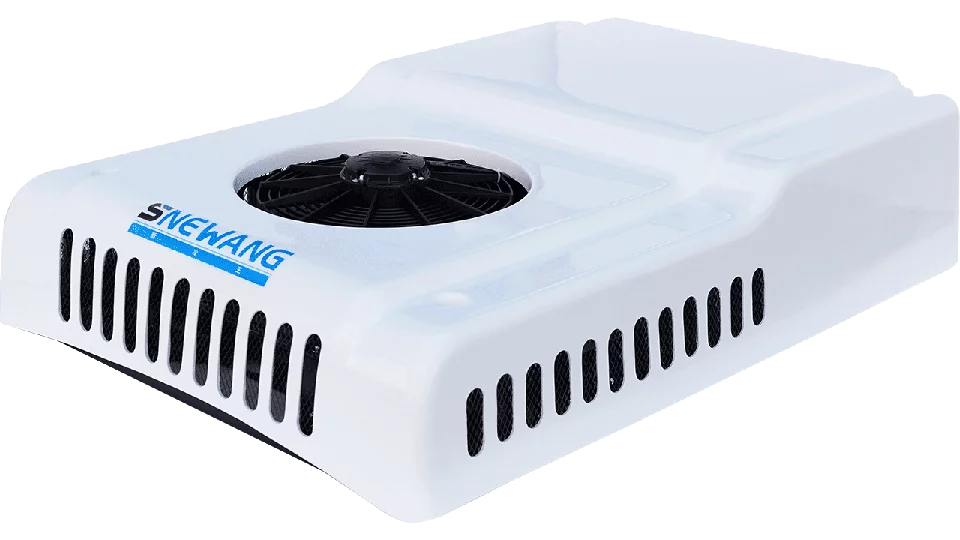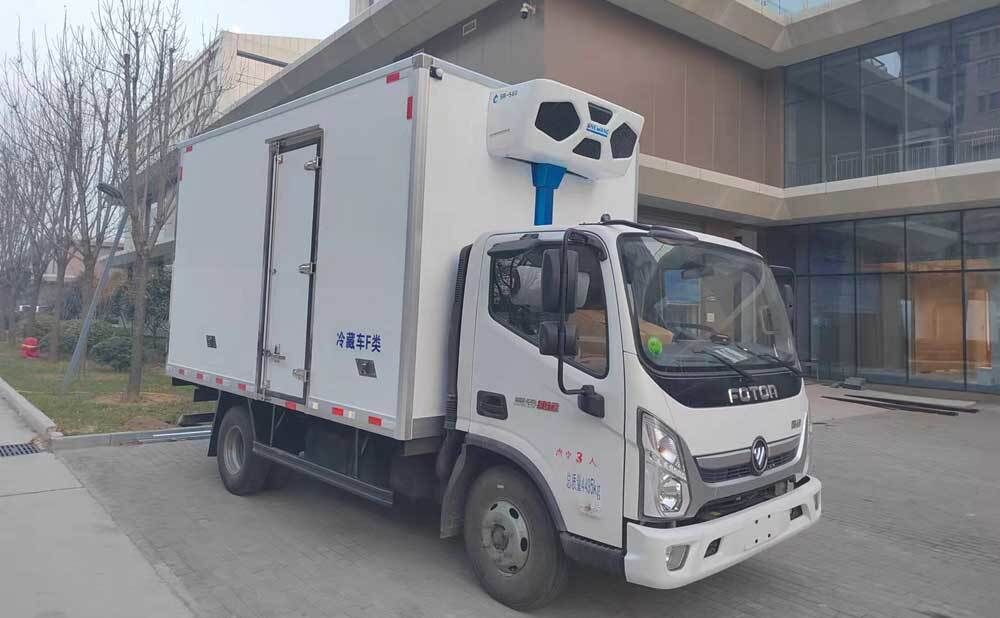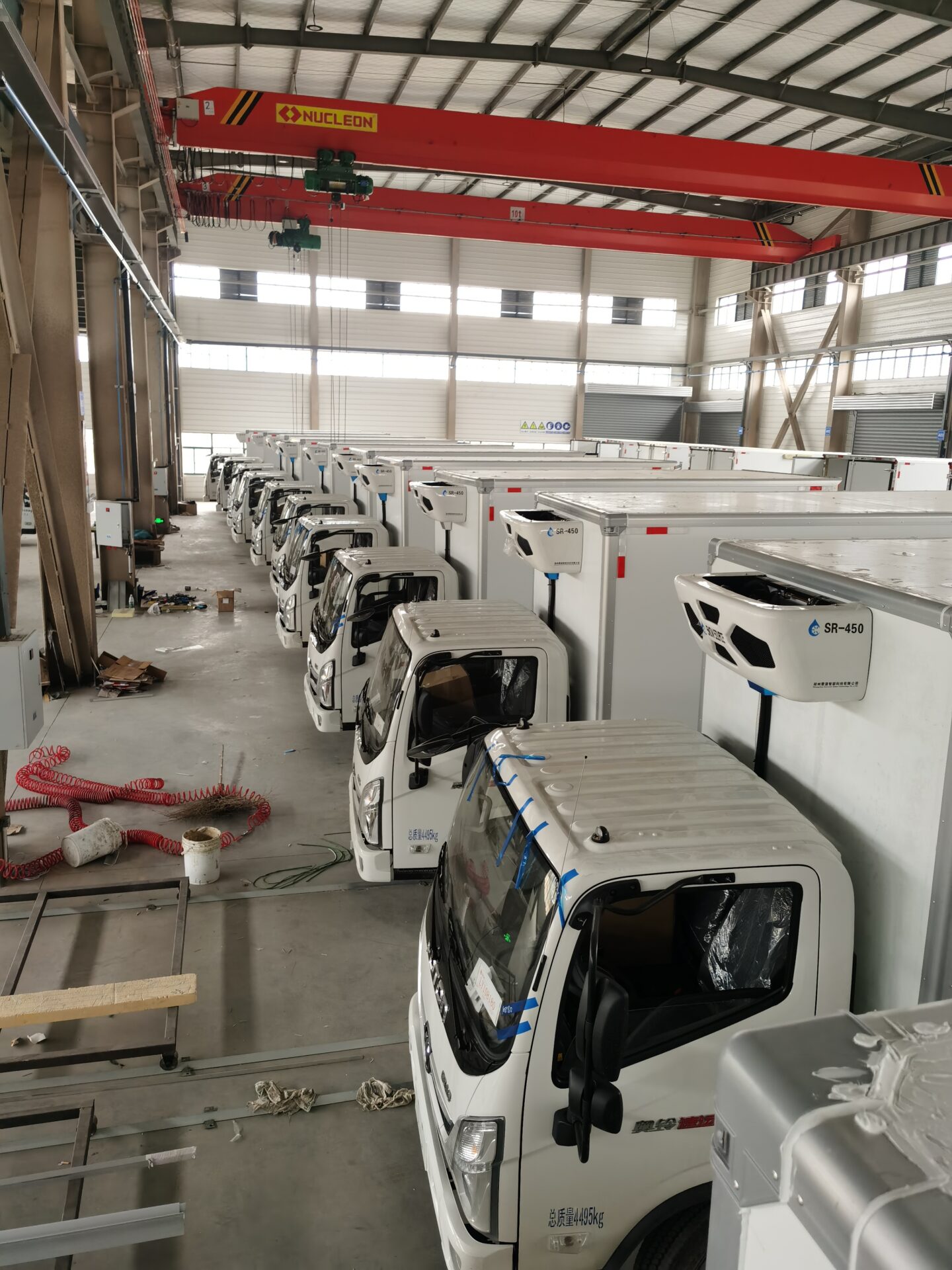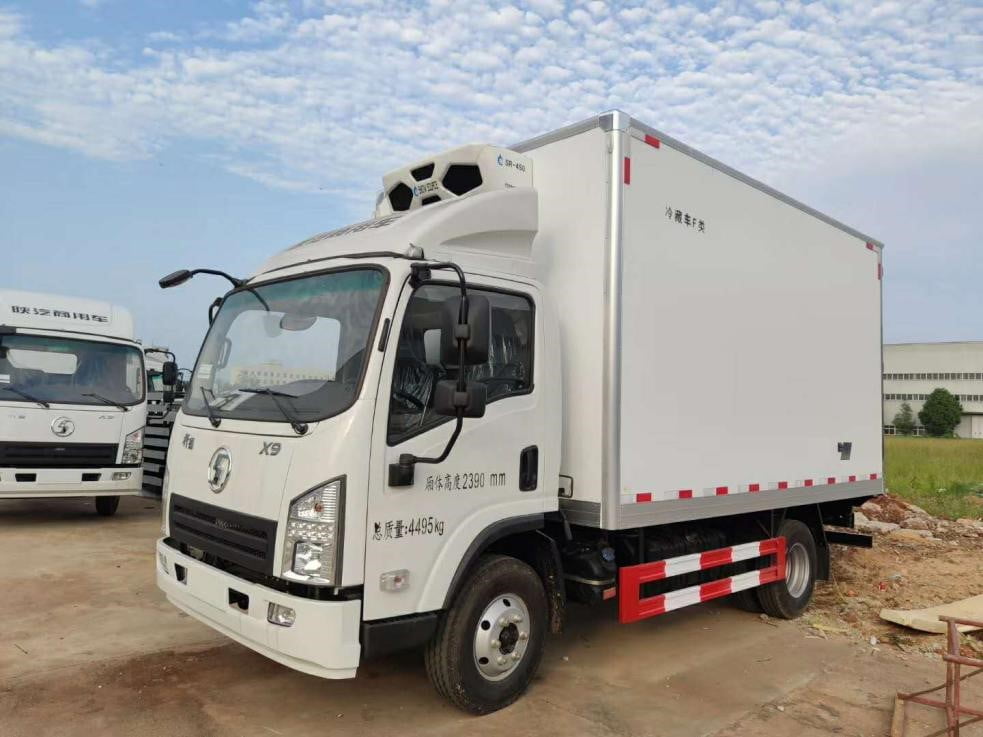Refrigerated trucks must keep the temperature cool to prevent damage to their products. Thus, an important step in their design is the optimization of the insulation and cooling systems of these vehicles. Cooling efficiency of refrigerated trucks is important for cold chain transportation as well.
The heat transfer within a cooled truck is a key phenomenon for the temperature of the truck and the control of the cooling system.
A thorough understanding of the aerothermal configuration of the cooled box is required for the design of an efficient air cooling system and the choice of appropriate insulation materials. This content describes a studied numerical model to simulate phenomena of heat transfer which occur during a cooled truck. For two rear door configurations, closed or open, Aero-thermal simulations are carried out for the purpose of defining loading or unloading periods for goods and transport periods.
Refrigerated Trucks
Refrigerated trucks are designed to keep a cold temperature in order to transport food and other perishable goods. Unless properly cooled, these products can be heated above an acceptable temperature and thus harmed during transit. In particular, this is especially true when products have been exposed to heat for a long time.
Although keeping a truck correctly cooled may appear straightforward, several essential elements must be taken into account. For one thing, to maintain the correct temperature, the design of the cooling system needs to be optimized. In order to maintain the requested temperature, which requires selecting the right materials for the work, the walls of the truck have to be insulated sufficiently.
Now consider loading or unloading goods from the truck. The open and closed door cycles of cooled trucks make it even more difficult to address the above items. However, in order to achieve realistic results in terms of cooling efficiency, it is important to deal with these periods.
Refrigerated Truck Model
It’s important to have a thorough understanding of the aerothermal configuration inside a refrigerated truck when selecting the best thermal insulation material for an efficient air-cooling system. These type of trucks (Cooling Efficiency of Refrigerated Trucks) is used for food, pharmaceutical etc. logistics.
The study team has created a heat transfer aerothermal model during normal operation of a cooled truck for their simulation studies. Their objective is to predict the temperature and the air velocity of the truck and to see what happens when the rear door is closed and opened.
Let’s look more closely at the geometry of their model. In a parallelepiped box with a cooling system, the engineers modeled the cooled area of the truck (the cooled box). The cooling system includes two circular openings for the extraction of air and a rectangular opening that allows cooled air to be blowed into the main chest. As the y–z geometry of the model is Y–z symmetry, the physical phenomena in the whole cold compartment can be described fully with just a half-box model.


The study team analyzed 2 stages of the operating cycle of a cooled truck with the use of two different methods in order to determine the distribution of temperature and air flow. The rear door of the truck is closed and a cooling system activated in the first stage, which takes approximately three hours. Both the ventilators and the cooling unit operate to cool the cooling box. The air in the cooling system is initially at -27°C and subsequently heated when the warmer box walls come into contact. The engineers partially decoupled their simulations during this cooling period to minimize the freedom of the system.
The rear doors of the truck are then opened after cooling, and both the cooler and the ventilation system are switched off in the second phase, which lasts about 10 minutes. In contrast to the first stage, this step combines CFD and heat transfer to solve the CFD laminar and the transmission of heat equations. The team then analyzed the airflow in the box and the temperature variation during this period using these equations.
The Effect of Open/Closed-Door Cycles to the Cooling Efficiency of Refrigerated Trucks
Start with the results from the first stage of the simulation when the rear door of the truck is closed. The figure below shows a 10,000 seconds streamlining of the local speed (approximately 2 hours and 45 minutes). The air reaches its highest speed at the box roof facing the entrance and along the entrance wall. at this stage. As the air flows through the remaining chamber, the velocity decreases fast.

The air velocity distribution in the temperature field is very similar, with the colder areas corresponding to the areas with high speed and vice versa. In the graph below, the warmest region is the zone at the bottom of the box with air greater than 0°C. The following is a recirculation zone.

In the refrigerated box, the engineers also calculated the heat loss. In so doing, the air is cooling down on the truck and global warming losses grow over time. The lateral and the back walls, with similar loss profiles, cause the majority of the heat loss. Because the floor comprises the thickest materials and the most isolated surface, the surface loses extremely little energy.

The second phase, the engineers emphasized that the only driving power for the air is the natural convection caused by the difference between the exterior and interior temperatures with both the cooling and the ventilation system. As the box has much cooler temperatures, warmer air is flowing into the box.
As the following simulations show, heat air is quickly entering the box, but the average air speed falls below 10 cm/s after 50 seconds. The average air velocity is only 2 cm/s after 500 seconds, which could be as low as to this velocity because of a significant reduction in the temperature difference between the box and the environment outside.

The temperature for most of the body coincides about 10 seconds after the rear door of the truck opens (around 25°C). One exception is the wall area, where the surrounding air stays cool due to a thermal inertia.

The study team subsequently compared their thermal simulation data with physical tests in which the truck’s back door was opened and closed several times. The predictions of the model were consistent with the experimental temperatures. However, during the open door periods the simulation results show oscillations which have not been observed in the physical experiments. The engineers have suggested that a different location for the model and the physical sensor was used for temperature determination. The sensor’s intrinsic inertia is another potential cause that can cause a small temperature leveling effect.


Source: https://coldchaintoday.com/cooling-efficiency-of-refrigerated-trucks/




